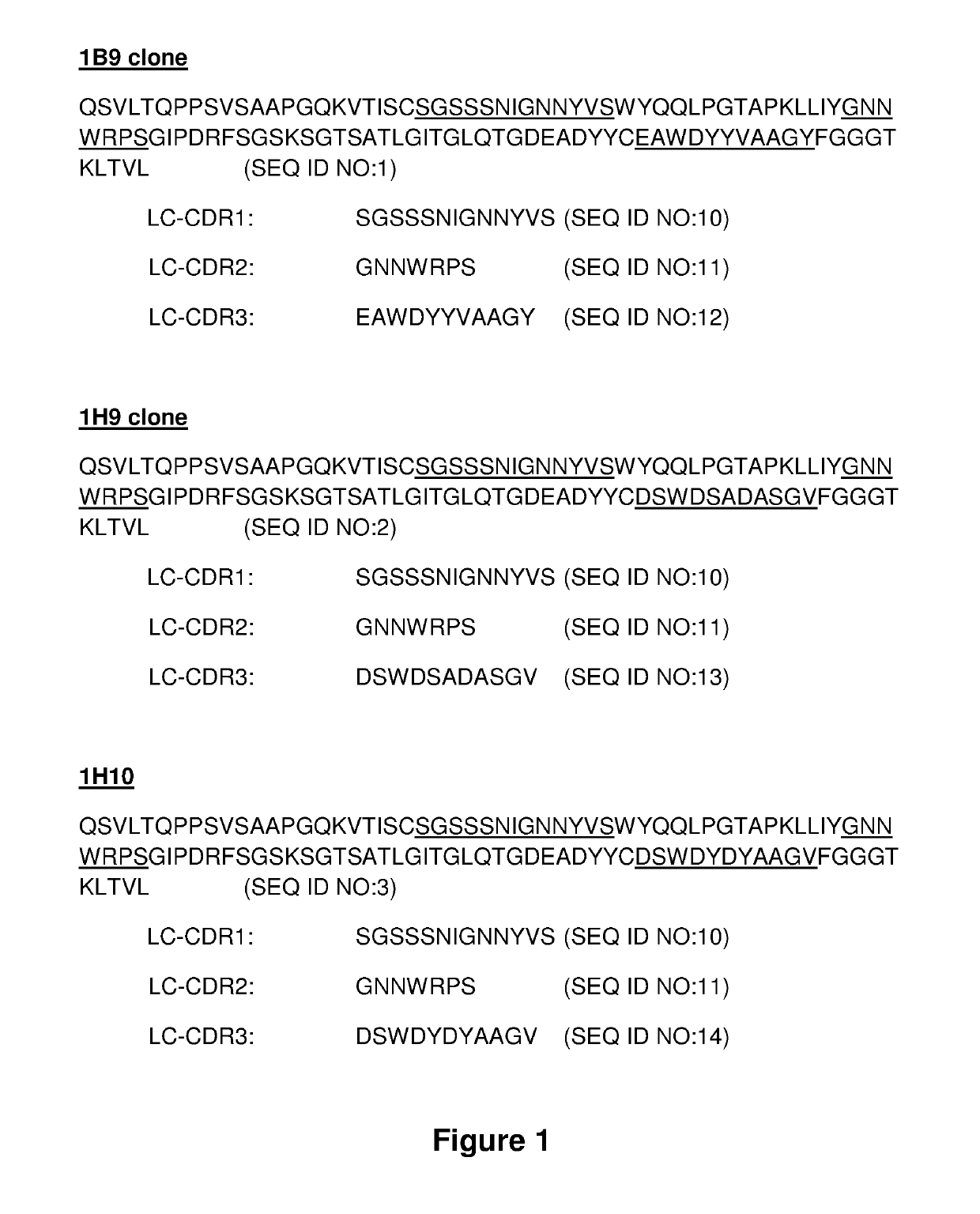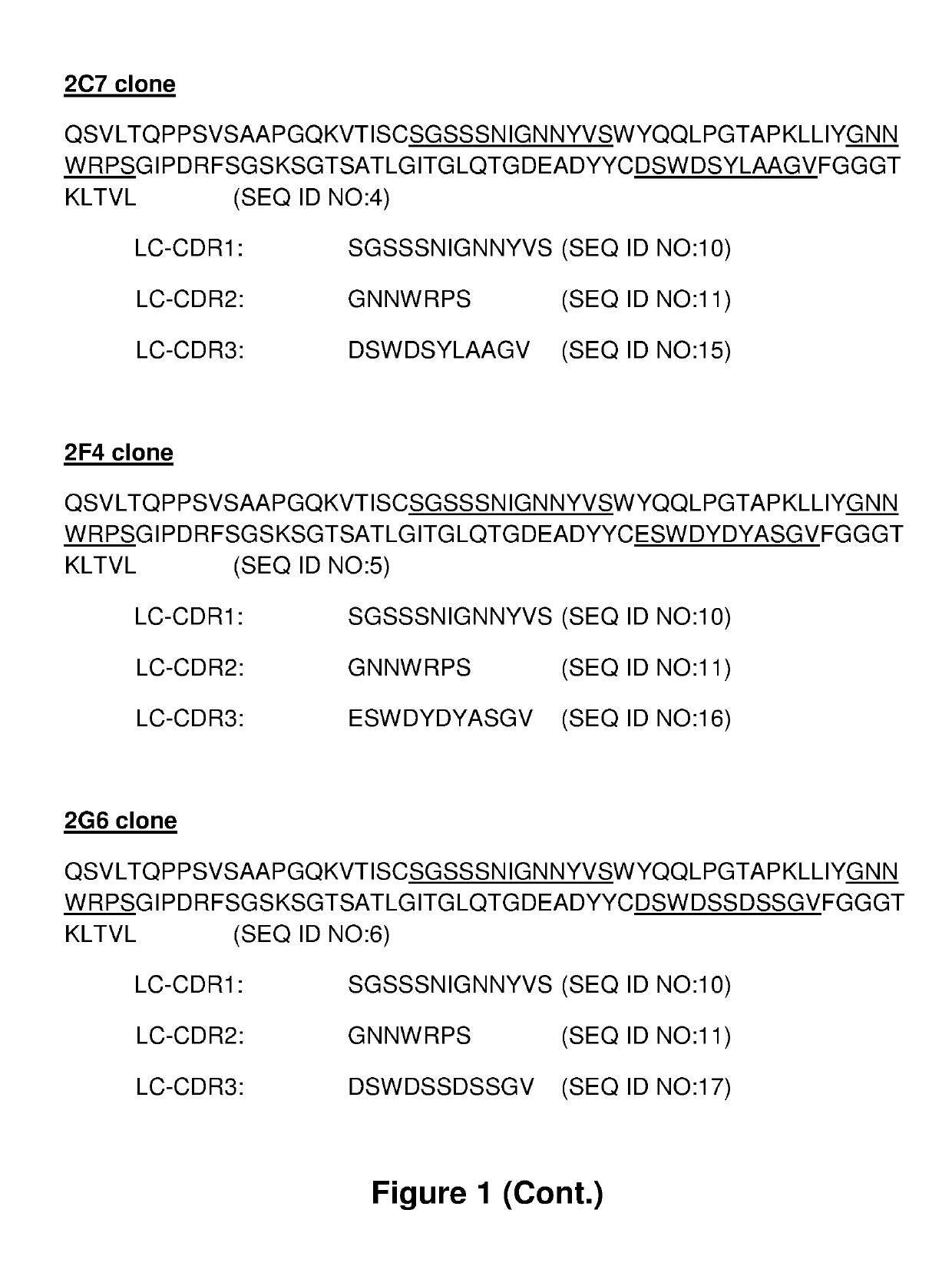Anti-TIM-3 antibodies
a technology of anti-tim-3 and antibodies, applied in the field of anti-tim-3 antibodies, can solve the problems of exhaustion and prevent optimal control of infection and tumors, and achieve the effect of restoring t-cell function
- Summary
- Abstract
- Description
- Claims
- Application Information
AI Technical Summary
Benefits of technology
Problems solved by technology
Method used
Image
Examples
Embodiment Construction
[0308]Isolation of Anti-Human TIM-3 Antibodies
[0309]Anti-TIM-3 antibodies were isolated from a human antibody phage display library via in vitro selection in a 3-round bio-panning process.
[0310]Basically, streptavidin-magnetic beads were coated with biotinylated human TIM-3 and used to fish-out anti-TIM-3-specific phages using magnetic sorting. Some steps to get rid of potential anti-biotin antibodies were added in the selection process.
[0311]After a small-scale induction in HB2151 cells, Fab antibodies were screened by ELISA. Briefly, ELISA plates were coated with human Tim-3 and blocked with a solution of casein. After extensive washes in PBS Tween-20, supernatants from induction plates were transferred into the ELISA plates in the presence of 7% milk in PBS. After 90 minutes at room temperature under agitation and extensive washes, a goat anti-human Fab antibody coupled to HRP was added. One hour later, plates were washed and TMB substrate added. The reaction was stopped with 1M ...
PUM
| Property | Measurement | Unit |
|---|---|---|
| size | aaaaa | aaaaa |
| width | aaaaa | aaaaa |
| flexible | aaaaa | aaaaa |
Abstract
Description
Claims
Application Information
 Login to View More
Login to View More - R&D
- Intellectual Property
- Life Sciences
- Materials
- Tech Scout
- Unparalleled Data Quality
- Higher Quality Content
- 60% Fewer Hallucinations
Browse by: Latest US Patents, China's latest patents, Technical Efficacy Thesaurus, Application Domain, Technology Topic, Popular Technical Reports.
© 2025 PatSnap. All rights reserved.Legal|Privacy policy|Modern Slavery Act Transparency Statement|Sitemap|About US| Contact US: help@patsnap.com



